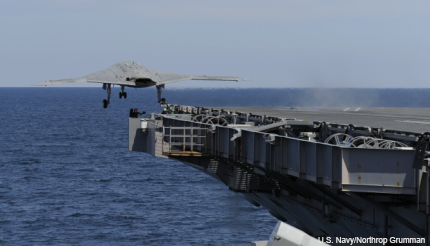A drone by any other name is … an RPA?
Joint Chiefs Chairman Gen. Martin Dempsey has a point about saying “remotely piloted aircraft” rather than “unmanned” or the dreaded “drone.” But it might be too late to do anything about it.

If Army Gen. Martin Dempsey had his way, the familiar terms “UAV,” “UAS” and, especially, “drone” would fly out the window, forever banished from the lexicon. In their place: remotely piloted aircraft, or RPA.
“You will never hear me use the word ‘drone,’ and you’ll never hear me use the term ‘unmanned aerial systems,’” Dempsey, the chairman of the Joint Chiefs of Staff, told reporters on Thursday. “Because they are not. They are remotely piloted aircraft.”
His point is that referring to such systems as unmanned (or using the somewhat more sinister sounding drone) leaves the impression that they’re self-sufficient, or even sentient, “flying around semi-autonomously making their own decisions and conducting kinetic strikes without oversight by responsible human beings. It’s not like that at all.”
In fact, he said, more than 80 people are involved with each RPA, from maintaining the aircraft to operating it to analyzing data from it. And the same standards apply to using a remotely piloted aircraft as to any other weapon.
Dempsey’s preferred word choice is technically more accurate, but the drone may be out of the hangar on this one. For one thing, the terms have become ingrained in the language, even if RPA is occasionally used. All of the services, from the Air Force to the Navy to the Coast Guard, call their unmanned aerial systems or vehicles just that: UAS and UAV. And although the military has generally avoided using the term drone, it has become cemented in everyday usage.
For another thing, the Defense Department’s own 25-year plan for remotely piloted aircraft — titled, in fact, the “Unmanned Systems Integrated Roadmap” — calls for greater autonomy and networking abilities among the systems.
True, all systems will, as Dempsey points, have human operators at their core, especially if their job is to carry out strikes rather than just conduct surveillance. But as the military increases its reliance on unmanned, remotely piloted aircraft and other robotic systems, their technical sophistication and autonomous capabilities will increase. And “drones,” likely, will always be with us.
NEXT STORY: Predator drone to get NATO-worthy Euro radio



